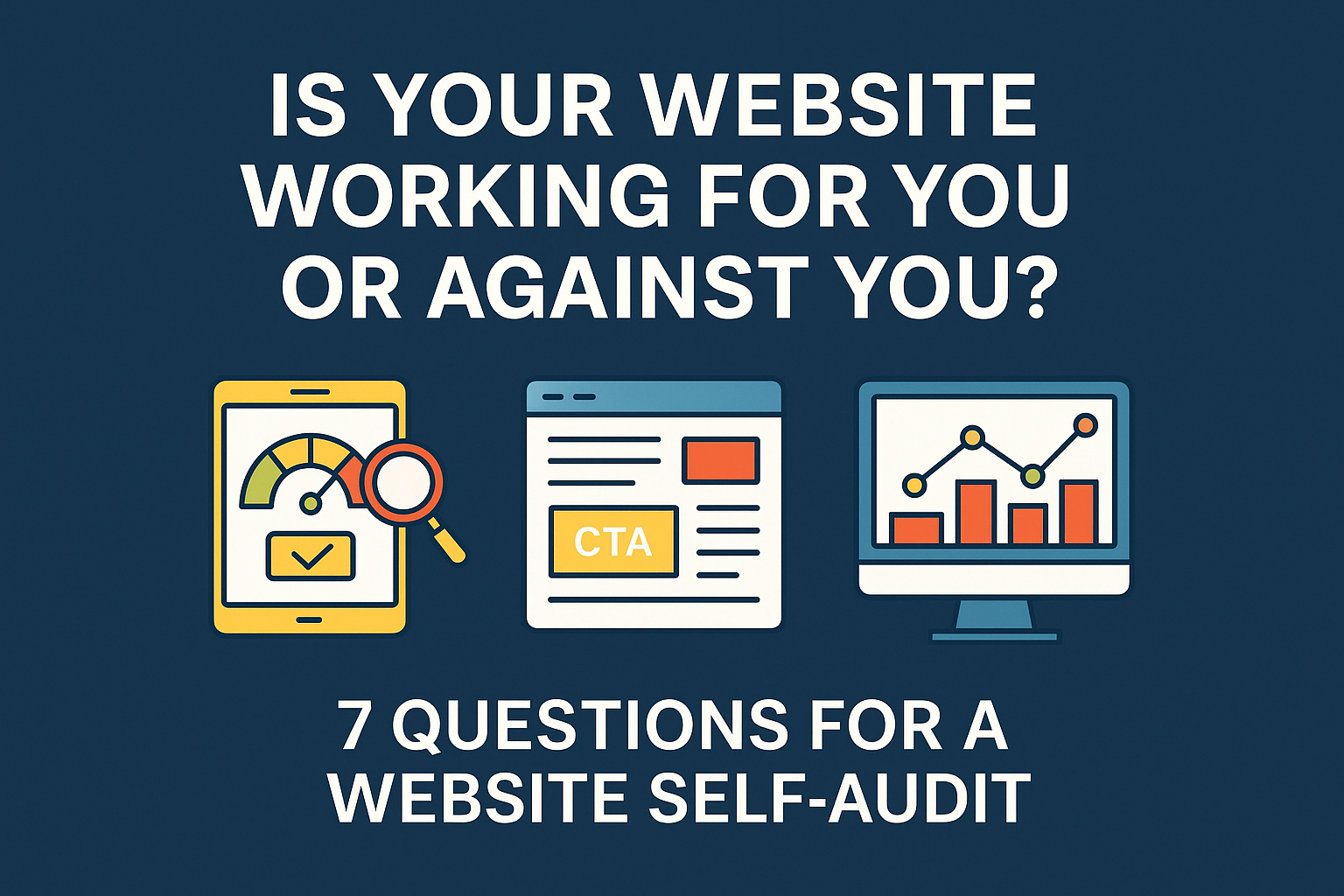Is Your Website Working for You or Against You? 7 Questions to Ask Now

Posted: August 18, 2025
Your website is often the first impression potential customers have of your brand, company, and products/services. In an age where attention spans are short and competition is only a click away, it’s no longer enough for a site to simply “exist.” It needs to actively work as a growth engine for your business. At JTS, we know exactly how important that is and a quick self-audit can help you determine if your website is a silent partner driving results — or an underperformer holding you back.
Below are seven critical questions to guide your evaluation.
1. Is your website mobile-friendly and fast?
Over 60% of web traffic comes from mobile devices, so if your site isn’t responsive — adapting to different device types and screen sizes — you’re already losing potential customers. Speed is just as critical: even a two-second delay in load time can drastically increase bounce rates (visitors leaving your site without having gotten the information they need or want to purchase your product or service.
- Key takeaway: Test your site on multiple devices and aim for load times at or quicker than 1 to 2 seconds.
2. Is your content clear, relevant, and up-to-date?
Attention spans are shorter now than they’ve ever been. Visitors should understand within seconds of arriving on your site what you do, who you serve, and why you’re different. Outdated product descriptions, old blog posts, or irrelevant information erode trust and signal neglect. Long-winded paragraphs and verbose blocks of copy will also hinder positive results and user experience.
- Key takeaway: Review and refresh core pages at least quarterly.
3. Does your website support your business goals?
Your site should be a tool, not just a digital brochure. Whether your goal is lead generation, online sales, or appointment scheduling, your website should have clear paths that guide visitors to take action. Every design choice, piece of copy, and functionality should directly contribute to moving your audience closer to those goals because a site that looks good but doesn’t convert is simply a missed opportunity.
- Key takeaway: Every page should have a purpose that ties to a measurable business objective and every page should provide users an opportunity to achieve your business goals.
4. Are you showing up in search results?
A beautiful site that no one finds won’t deliver results. Search engine optimization (SEO) ensures you appear where your customers are looking. This means optimizing your site’s structure, keywords, and content to align with what people are searching for, and doing it consistently over time, not just once. Without an intentional strategy, your competitors will win the clicks and the customers.
- Key takeaway: Monitor your search rankings and invest in ongoing SEO improvements.
5. Is it easy for visitors to take the next step?
Your calls-to-action (CTAs) like “Contact Us,” “Request a Quote,” or “Shop Now” should be visible, compelling, and repeated throughout your site. Visitors should never wonder how to move forward to connect with you, schedule an appointment, or purchase your products or services. The fewer steps and less friction there is between interest and action, the more conversions you’ll see.
- Key takeaway: Clear, action-oriented CTAs increase conversion rates significantly.
6. Is your site secure and technically sound?
If your site still shows “Not Secure” in the browser bar or loads with broken links and outdated plugins, you’re putting both your credibility and your visitors’ data at risk. Technical stability isn’t just about avoiding hacks. It’s about delivering a smooth, trustworthy experience that keeps users engaged. Search engines also penalize sites with persistent security or technical issues, making upkeep critical for visibility.
- Key takeaway: Use HTTPS, maintain regular updates, fix broken links promptly, and consider adding additional security tools like CAPTCHA on form submissions.
7. Do you measure performance regularly?
Without data, you’re guessing. Website analytics reveal how people use your site, where they drop off, and what’s driving conversions. Regularly reviewing these insights allows you to identify patterns, uncover hidden problems, and spot opportunities to make impactful improvements. A well-tracked website is a living, evolving tool, not a set-and-forget asset.
- Key takeaway: Track and review key metrics like traffic, bounce rate, and conversions monthly.
The bottom line: Your website can be one of the most powerful tools in your marketing toolkit but only if it’s actively working for you. A self-audit like this one can reveal where it’s excelling and where you need to invest to turn it into a true revenue driver.
If your answers to these seven questions left you feeling uncertain, it might be time to reimagine what your website could do for your business. At JTS, we specialize in transforming outdated or underperforming sites into modern, strategic tools that drive leads, build credibility, and support your growth goals. Whether you need a complete redesign, a targeted revamp, or simply a refresh to keep pace with today’s digital demands, we’ll guide you through every step by combining design, functionality, and strategy for measurable results. Let’s talk about how we can make your website your most powerful business asset.
